Adventure, Chile
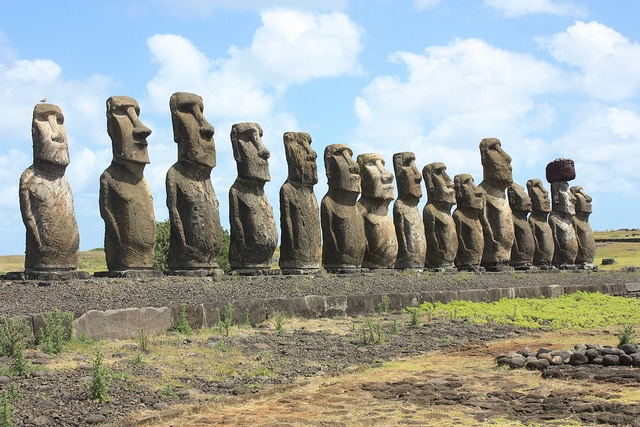
Removed from Unnamed collection
Ahu Tongariki 
With 15 gigantic stone-carved moai lined up on a 200-foot-long platform and a remote location framed by the looming Rano Raraku volcano and the crashing ocean, Ahu Tongariki is nothing short of spectacular. For many visitors, this is the star attraction of Easter Island, and looking up at the towering figures, the largest of which stands 14 meters tall, it’s hard not to be in awe of the Rapa Nui people, who achieved the seemingly impossible feat of carving and moving the 30-ton stone boulders to their waterfront perch.
Ahu Tongariki is the largest ceremonial site ever made on the island, featuring the largest number of moai ever erected on a single site, and each statue is unique, with only one featuring the iconic red-rock “pukao,” or ceremonial headdress. Even more astounding, considering the size and weight of the statues, is that the site was almost completely destroyed by a tsunami in 1960, with the rocks flung more than 90 meters inland. The ahu has since been painstakingly restored, a project that took Chilean archaeologists Claudio Cristino and Patricia Vargas five years and was finally completed in 1995.
Read more about Best Ahu Tongariki Tours, Trips & Admission Tickets - Easter Island - https://www.viator.com/en-AU/Easter-Island-attractions/Ahu-Tongariki/d306-a15083?mcid=56757 https://au.viator.com/Easter-Island-attractions/Ahu-Tongariki/d306-a15083
Map

Removed from Unnamed collection
Orongo Ceremonial Village 
The ceremonial village of Orongo is one of the most interesting and spectacular archaeological sites on Easter Island. Here an ancient ritual that still inspires the competitions of the Tapati Rapa Nui festival took place.
The village of Orongo was inhabited seasonally by the chiefs and main characters of the ancient tribes, who hoped to collect the first sacred egg of the manutara bird in the months of spring.
It is believed that the first Orongo constructions were not related to the manutara cult. In fact, just before the start of the village, on the edge that looks at the lagoon, there are the remains of a small ahu or platform. Only the base at ground level of a single moai is conserved, which according to some hypothesis could be the famous Hoa Hakananai’a moai.
In front of the ahu some holes in the stones can be seen, which could have been used as an astronomical observatory to determine the position of the sun. https://imaginaisladepascua.com/en/easter-island-sightseeing/easter-island-archaeology/orongo/
Map
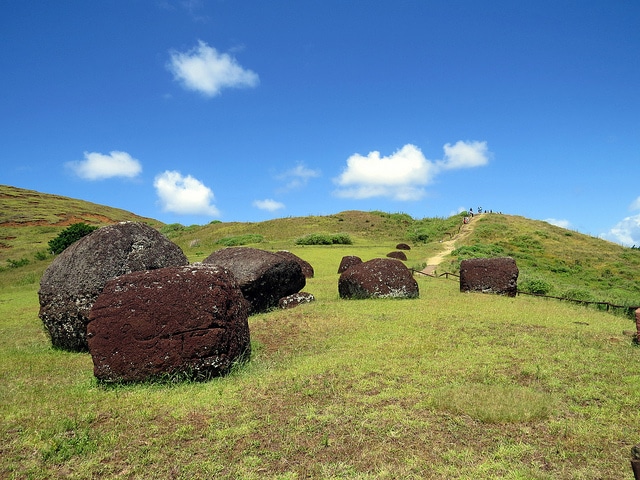
Removed from Unnamed collection
Puna Pau 
Puna Pau is the quarry where the red stone for the pukao, or topknot, for the moai statues comes from.
In the later period of moai statue carving, a final decoration was build for the statues - a huge red block of stone on the head of the moais. This red stone is called pukao and represents the hair of the person the statue represents. The mana - a magical power - was preserved in the hair, so more hair would potentially mean more mana.
All of the moai top knots come from Puna Pau. This is because Puna Pau is the red stone quarry which has the most intense red color, giving a more intense visual appearance once on top of the moai. https://www.easterisland.travel/places-to-visit/puna-pau/
Map
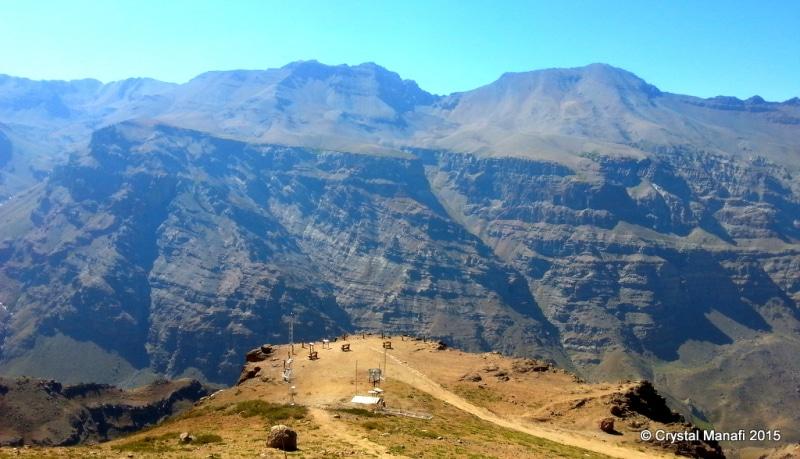
Removed from Unnamed collection
Andes Mountains 
Recently, Santiago Tourist was invited to take a tour with Turistik, a local tour company. They’re best known for their red, double-decker red buses and innovative hop on – hop off touristic route of Santiago. http://santiagotourist.com/visit-the-andes-mountains-from-santiago-with-turistik/
Map
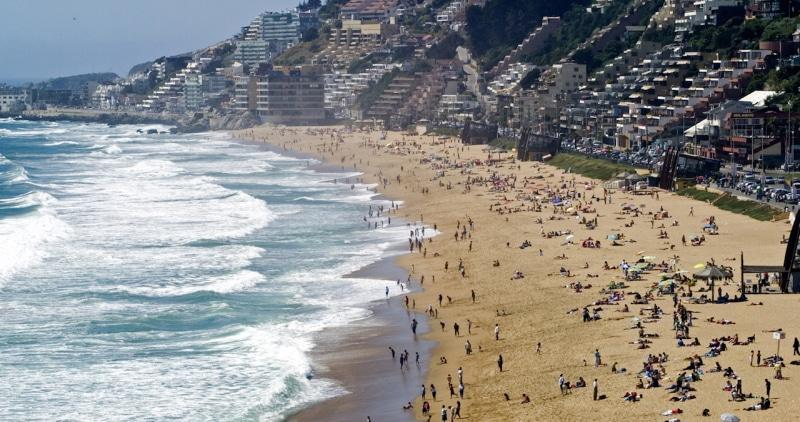
Removed from Unnamed collection
Renaca Beach 
Parties, Bohemian life, beaches, fun and more is what you’ll find in Reñaca during the summer months. Enjoy your day on the beautiful beaches, with outdoor activities and good restaurants for all tastes. http://chile.travel/en/where-to-go/central-area-santiago-and-valparaiso/vina-del-mar/renaca
Map
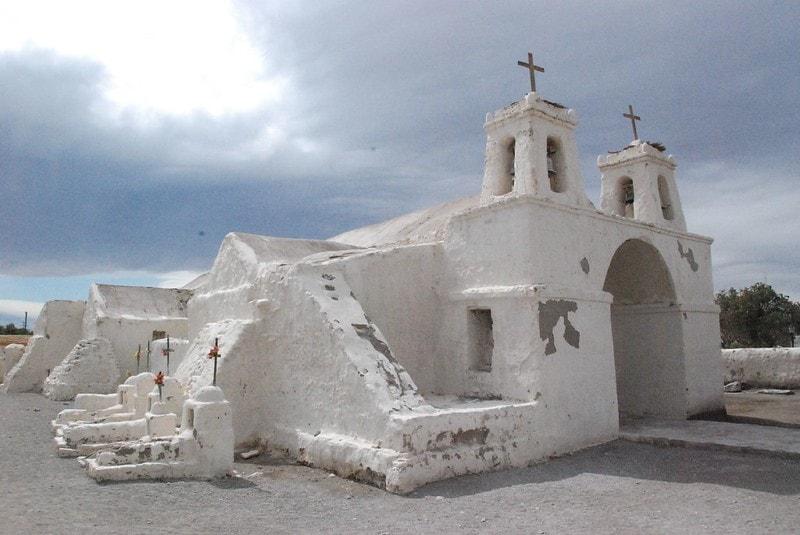
Removed from Unnamed collection
Chiu Chiu
A must-see for tourists following the “Inca trail”; this is an oasis of shade in the middle of the desert. Inhabited by communities from Atacama, its easy-going pace is only interrupted by religious festivities which, depending on the patron saint, include confetti, flour or algarrobo drinks (fermented drink made from the pods and seeds of the algarrobo tree).
Try the typical food of the north and don’t forget to visit the San Francisco Church, built in the 1600s. It is the oldest church in Chile and was built using millennial indigenous techniques. Go in and marvel: it is made out of mud and cactus wood. https://chile.travel/en/where-to-go/north-and-the-atacama-desert/san-pedro-atacama/chiu-chiu
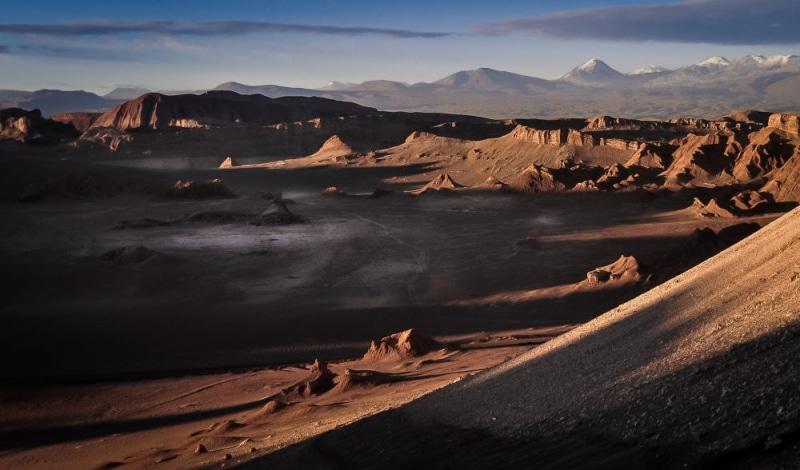
Removed from Unnamed collection
Moon and Mars Valley
The peculiar rocky formations and dunes of Moon Valley (Valle de la Luna) and the changing colours of Mars Valley (Valle de Marte) and the Salt Mountains are an attraction that you can’t miss while visiting the Atacama Desert. At night, both places become the most romantic spot for stargazing.
Found just a few minutes from San Pedro de Atacama, you can get to these mystical settings on bike, trek around them and enjoy sandboarding on the dunes. Visit them and appreciate the overwhelming shadows that the desert displays. https://chile.travel/en/where-to-go/north-and-the-atacama-desert/san-pedro-atacama/moon-and-death-valley
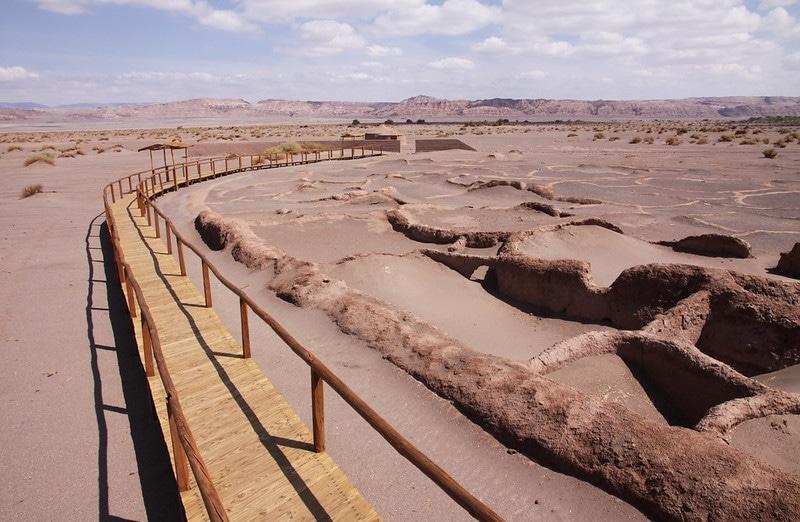
Removed from Unnamed collection
Tulor Village
Tulor Village was an important city circa 2800 b.C. with 200 inhabitants. Today, it´s a museum that seems to have been burried under the sand, right in the middle of the desert. The new town features houses built with mud, just like the first inhabitants used to build their homes, surrounded by walls that worked as protection. The constructions reach the 2 meters high and most of them have balconies. https://www.visitchile.com/en/tulor-village/
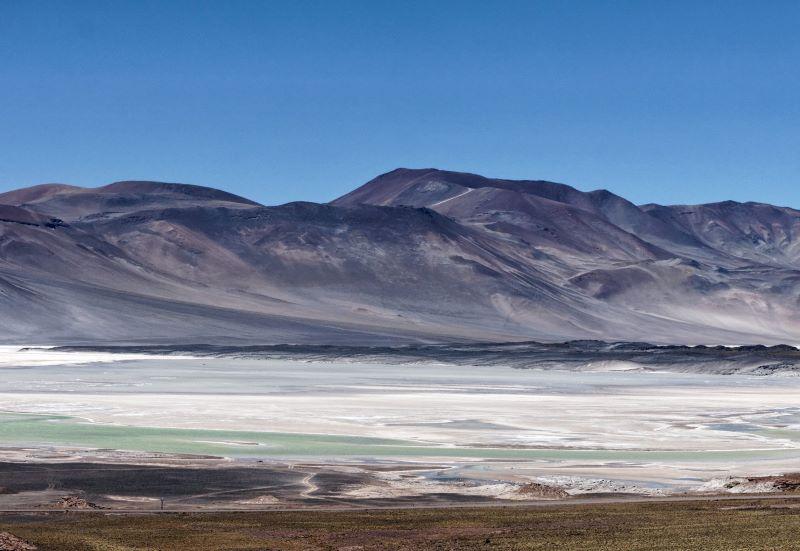
Removed from Unnamed collection
Atacama Salt Flat
Center-stage of many surprises, the 3,000 square kilometer salt lake is an unbeatable sight. Home to Andean birds and a large lithium reserve, its thick crust forms heaps that crackle at sundown when temperatures drop quickly.
The Atacama Salt Flat is one of the main attractions of the Los Flamencos National Reserve. Be amazed by the large number of long-legged birds that nest and feed in its “watery eyes”, like those of the Chaxa Lagoon. Keep your eyes wide open to try to spot the differences between the Andean, Chilean and James flamingos. https://chile.travel/en/where-to-go/north-and-the-atacama-desert/san-pedro-atacama/atacama-salt-flats

Removed from Unnamed collection
Los Flamencos National Reserve
In the enormity of the desert, you’ll find lagoons, salt flats, and mountains that are intertwined with the landscape. Together they create magical sights!
The Los Flamencos National Reserve invites you to enjoy the beauty of the landscape around it. The diverse climatic conditions of its seven areas will surprise you as you become one with your surroundings. You can see its variety of flora and fauna where flamingos take center stage.
Walk along the trails around the spectacular altiplanic lagoons, discover the Chaxa Tourist Center and see how the sun sets behind Moon Valley (Valle de la Luna). https://chile.travel/en/intereses-destacados/national-parks-and-reserves/los-flamencos-national-reserve

